By Vera B.
Oh, so many years ago, when Victoria was queen, a lute player and a pianist fell in love. Viscount Arthur was the eldest son of the Earl and Countess who lived in the mansion house near the river. Lady Bridget was the youngest daughter of the Duke of Clarence.
Arthur first touched a piano when he was three. His fascination with the sound the piano made when he touched it made him laugh. It was a childish reaction to his playful attempt to attract his nanny’s attention.
Bridget found the lute in a similar fashion. On a snowy day in winter, her nanny left her alone in the castle’s music room. As she wandered about, she discovered many new things and at last found the courage to touch one that she would learn was called a lute. By Spring she could play simple but memorable tunes.
Viscount Arthur’s parents were members of the court, but he was known simply by his given name throughout the town for his enchanting melodies that danced through the village like fireflies. One day as he walked about thinking of new tunes, he happened upon a small café, just off the town square. He had never been there before but stopped by for a late morning refreshment. As he finished his beverage, Arthur noticed a piano in the corner. As he walked by on his way to the door, he touched a key and the note brought back a memory long forgotten. It was a memory that made him laugh. He neglected to ask permission, but he sat on the piano bench and spent the rest of his day playing for a crowd that assembled around the room. Lady Bridget was among the many who sang along as he played. Arthur’s music captivated Bridget.
At closing time, long after sunset, the café-keeper asked Arthur to return and play the piano any day he wished. Arthur returned frequently. One fine day, while setting up for his usual performance, Arthur heard a sound that made his heart skip a beat. It was the soft, delicate notes of a lute, coming from the town square. Intrigued, he wandered toward the music. At last, he spotted a young girl sitting in the shade of an ancient oak tree. She was holding a lute as if it were a child and he recognized her from his first day playing the café’s piano. It was Bridget whose fingers gracefully moved along the neck of a beautiful lute that made intriguing melodies as sweet as a first kiss.
Arthur stood by the edge of the square, entranced by her artistry. Bridget’s deep brown eyes sparkled as she played, and the way she lost herself in her music reminded him of his own love for music. As a final note faded into the warm air, he mustered the courage to approach her.
“Your playing is breathtaking,” he said, his voice barely above a whisper.
Bridget looked up, surprised but pleased. “Thank you! But I remember that you are the piano player at the café, so I know that your piano has a glorious story to tell, as well! I would love to hear more!”
As they talked, they discovered a shared love for music and a deep understanding of its power to convey emotions. Days turned into weeks as Arthur and Bridget began to meet regularly, exploring the cobbled streets of their town, sharing meals, and playing music together. Their connection grew stronger with each passing day, harmonizing beautifully like the melodies they crafted.
One evening, as the sun dipped below the horizon, painting the sky in hues of orange, Arthur invited Bridget to perform with him at the mansion house music room when soon he would present a program for dozens of invited guests. “When you arrive, tell the doorman that you are to meet me at the piano. He will be your guide. If you allow it, I will be your inspiration.”
That night, he at the piano, she with her lute, created a musical extravaganza that yielded a rich, resonant program of tunes adored by the admirers. The invited guests were mesmerized, swaying to the rhythms, enjoying the magic and ethereal beauty of their collaboration.
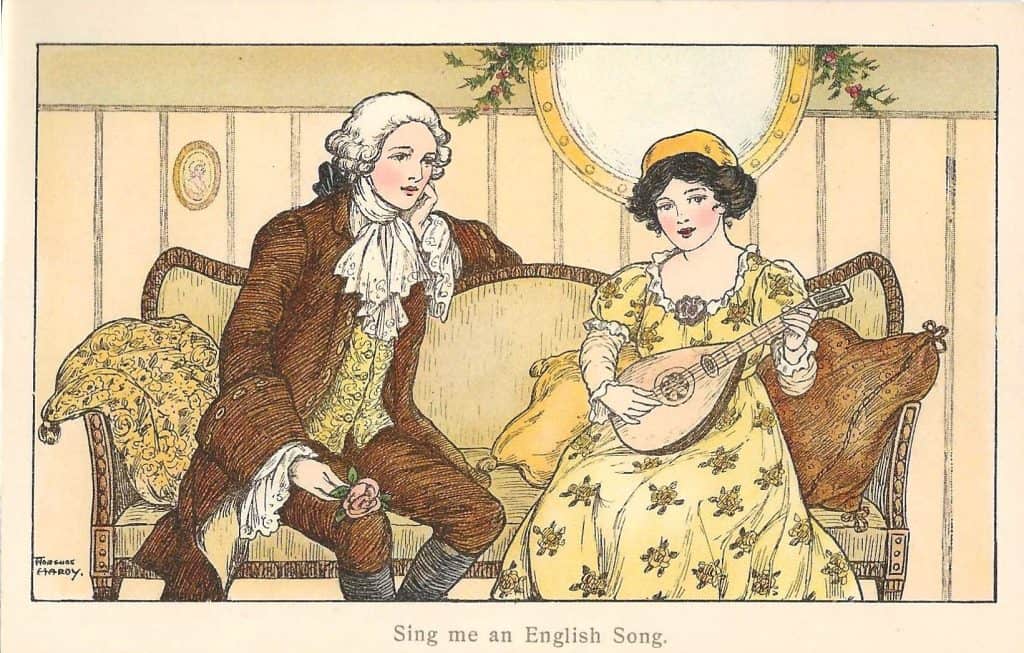
As the last note lingered, the applause erupted. In that moment, Arthur realized his heart was no longer just singing for the music; it was singing for Bridget. He knew he had to express his feelings.
The guests went home, the staff retired, and Arthur took charge. Underneath a starlit sky, with the sound of crickets chirping in the background, he took Bridget’s hand in his. “Bridget,” he said, his voice steady yet filled with emotion, “your music has transformed my life. I have fallen in love with you, as deeply as I know how. Will you be my muse, my partner, and share this beautiful journey of life and music with me?”
Bridget’s eyes glistened with joy as a smile lit up her face. “Arthur, I’ve felt the same way. Your music is always in my heart, and I cannot imagine a life without your melodies beside mine. Yes, I will. I will be your muse. I will be your partner. And I will share this beautiful journey of life and music with you.”
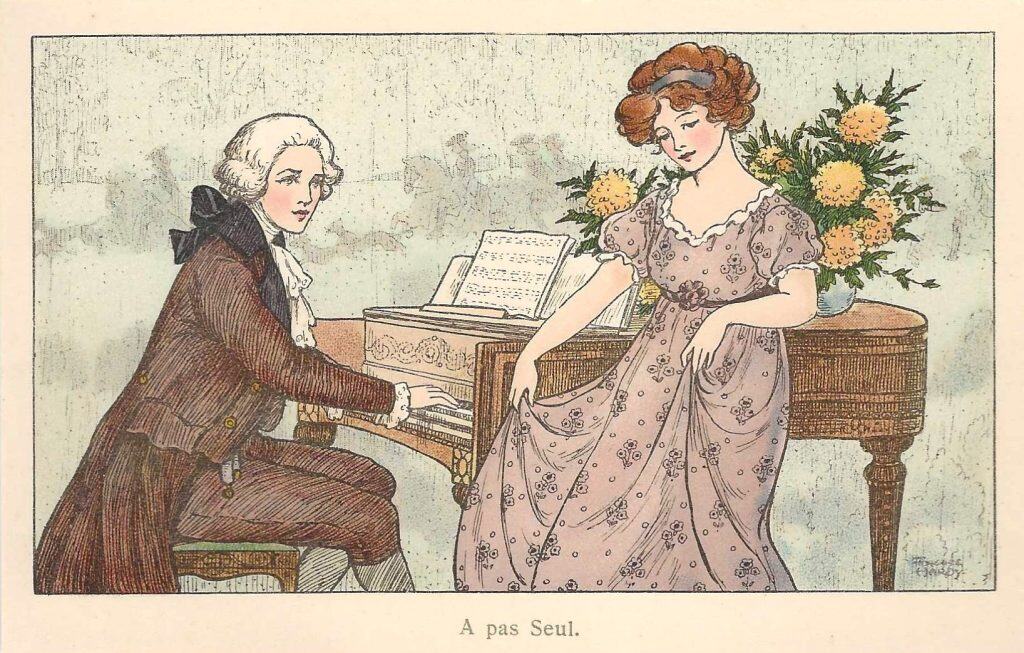
From that day onward, Arthur and Bridget became an inseparable duo, their love story intertwined with their music. Together, they composed new songs that echoed throughout the village, celebrating not only their love but also the profound beauty of two different worlds – that of a lute: another of a piano – coming together in perfect harmony. Their melodies, rich with passion, would forever linger in the hearts of those who listened.
**
My name is Vera Buckhinski, everyone calls me Vera B. After college, I became a teacher of the visually handicapped. My father passed away in 2022 and left behind his collection of postcards. I always wondered why he collected postcards but now that I have seen them, I understand. Appropriate stories that can be read to the blind are scarce, so I am writing stories for my students using my father’s postcards as inspiration. This love story is one of the first I wrote. I hope you enjoy reading; my students enjoyed hearing it.
**
[Editor’s note: This contribution, A Piano and a Lute, a Love Story came to Postcard History Online Magazine from the TELL YOUR POSTCARD STORY TO POSTCARD HISTORY button on the homepage. Click on the button to learn how to make your story into an article.]

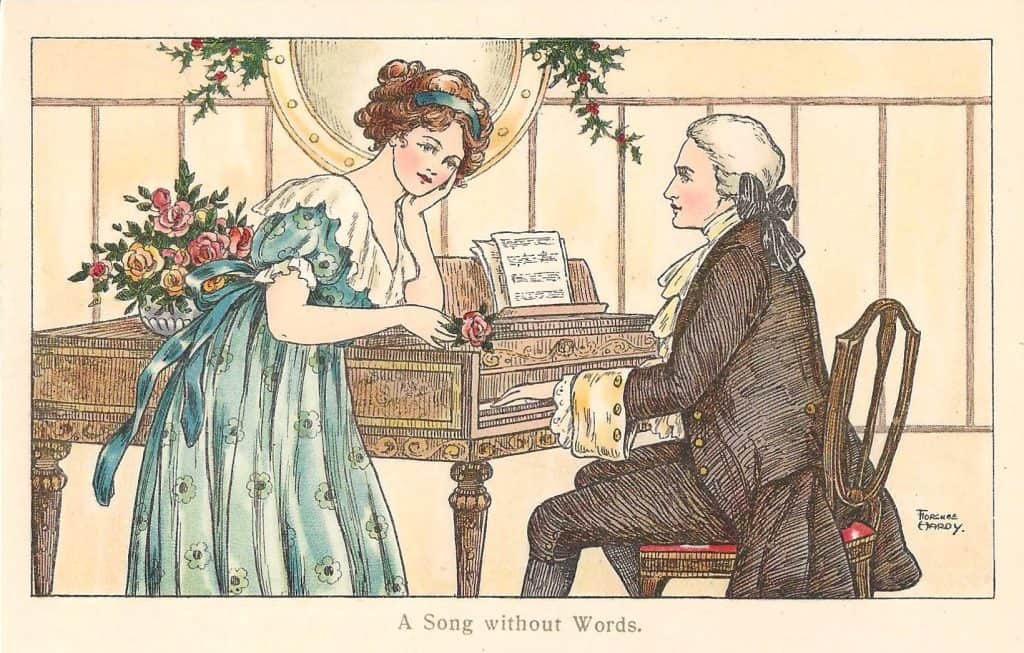
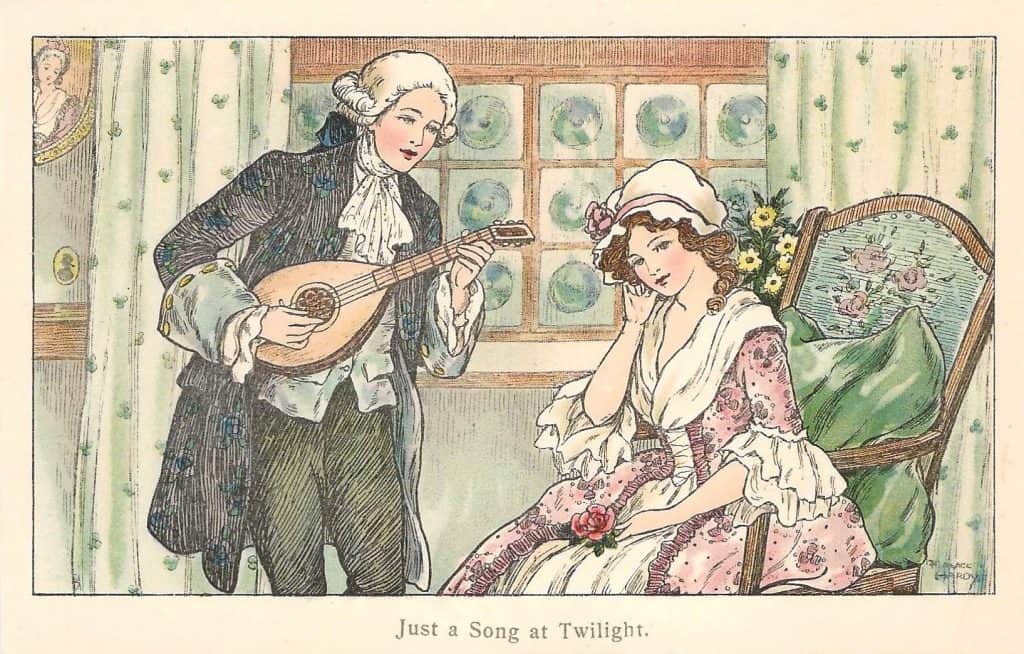
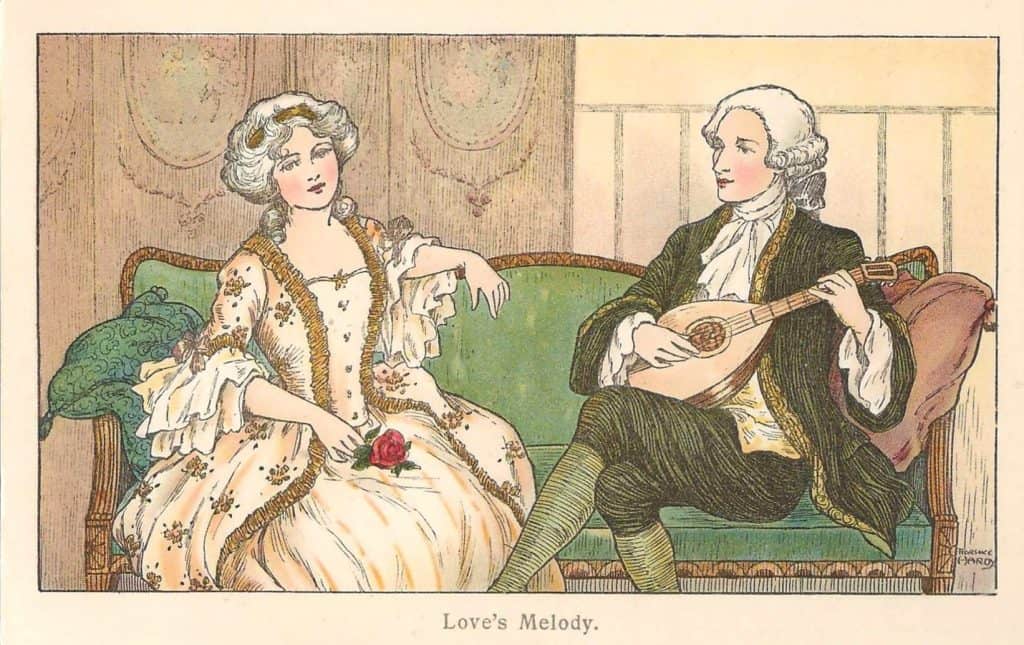
Hello Vera. Using postcards to teach is such a wonderful tool. Another teacher friend of mine here in California, Joe Spina,also uses postcards in teaching his students. Thanks for the article; I will be looking forward to more.
i wonder how well Arthur played the lute (see cards #3 and #4), and whether Bridget answered honestly if he asked and she found his technique wanting.
Mr. Kozak
I’m sorry. You missed the point of this story. It wasn’t a competition; it’s a love story.
As a retired teacher, it is neat to hear of someone using postcards in a classroom to help students. Kudos to your Dad, Vera, and to you for writing and putting this story out.
Truly lovely story. Thank you for sharing.